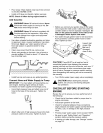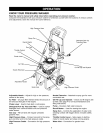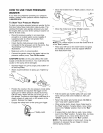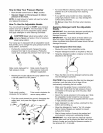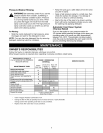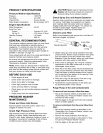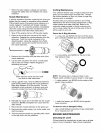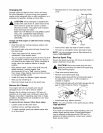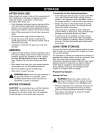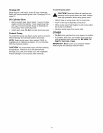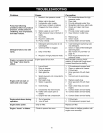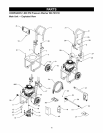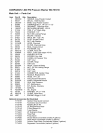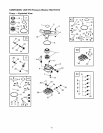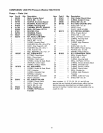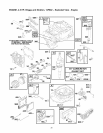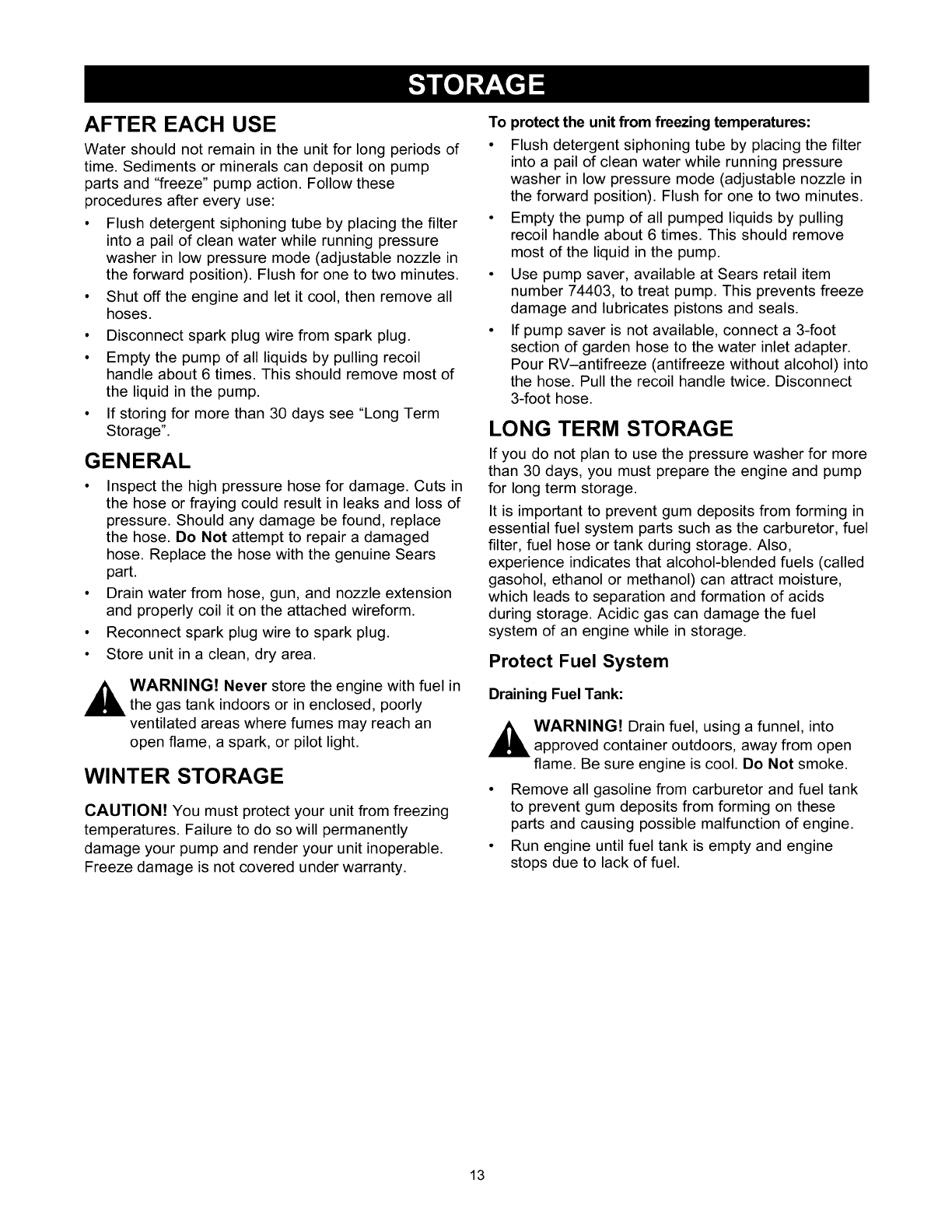
AFTER EACH USE
Water should not remain in the unit for long periods of
time. Sediments or minerals can deposit on pump
parts and "freeze" pump action. Follow these
procedures after every use:
• Flush detergent siphoning tube by placing the filter
into a pail of clean water while running pressure
washer in low pressure mode (adjustable nozzle in
the forward position). Flush for one to two minutes.
• Shut off the engine and let it cool, then remove all
hoses.
• Disconnect spark plug wire from spark plug.
• Empty the pump of all liquids by pulling recoil
handle about 6 times. This should remove most of
the liquid in the pump.
• If storing for more than 30 days see "Long Term
Storage".
GENERAL
• Inspect the high pressure hose for damage. Cuts in
the hose or fraying could result in leaks and loss of
pressure. Should any damage be found, replace
the hose. Do Not attempt to repair a damaged
hose. Replace the hose with the genuine Sears
part.
• Drain water from hose, gun, and nozzle extension
and properly coil it on the attached wireform.
• Reconnect spark plug wire to spark plug.
• Store unit in a clean, dry area.
_ ARNING! Never store the engine with fuel in
the gas tank indoors or in enclosed, poorly
ventilated areas where fumes may reach an
open flame, a spark, or pilot light.
WINTER STORAGE
CAUTION! You must protect your unit from freezing
temperatures. Failure to do so will permanently
damage your pump and render your unit inoperable.
Freeze damage is not covered under warranty.
To protect the unit from freezing temperatures:
• Flush detergent siphoning tube by placing the filter
into a pail of clean water while running pressure
washer in low pressure mode (adjustable nozzle in
the forward position). Flush for one to two minutes.
• Empty the pump of all pumped liquids by pulling
recoil handle about 6 times. This should remove
most of the liquid in the pump.
• Use pump saver, available at Sears retail item
number 74403, to treat pump. This prevents freeze
damage and lubricates pistons and seals.
• If pump saver is not available, connect a 3-foot
section of garden hose to the water inlet adapter.
Pour RV-antifreeze (antifreeze without alcohol) into
the hose. Pull the recoil handle twice. Disconnect
3-foot hose.
LONG TERM STORAGE
If you do not plan to use the pressure washer for more
than 30 days, you must prepare the engine and pump
for long term storage.
It is important to prevent gum deposits from forming in
essential fuel system parts such as the carburetor, fuel
filter, fuel hose or tank during storage. Also,
experience indicates that alcohol-blended fuels (called
gasohol, ethanol or methanol) can attract moisture,
which leads to separation and formation of acids
during storage. Acidic gas can damage the fuel
system of an engine while in storage.
Protect Fuel System
Draining Fuel Tank:
_ ARNING! Drain fuel, using a funnel, into
approved container outdoors, away from open
flame. Be sure engine is cool. Do Not smoke.
• Remove all gasoline from carburetor and fuel tank
to prevent gum deposits from forming on these
parts and causing possible malfunction of engine.
• Run engine until fuel tank is empty and engine
stops due to lack of fuel.
13



